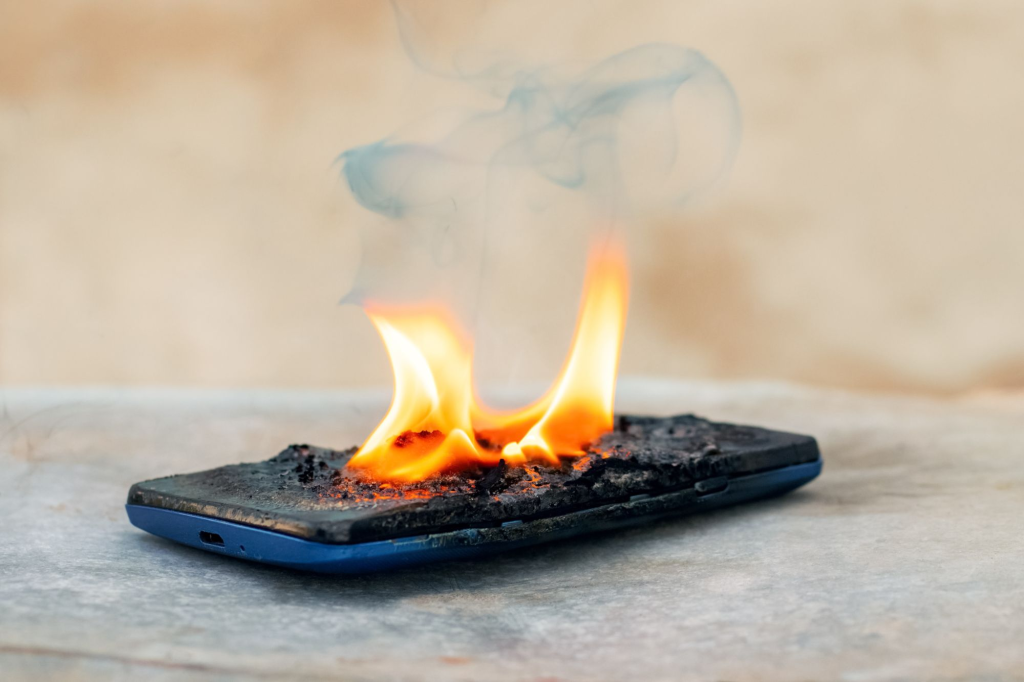Lithium batteries have become the powerhouse of energy storage in modern technology, powering a vast array of electronic devices from smartphones and laptops to electric vehicles and renewable energy systems. Their lightweight design, high energy density, and long-lasting performance have made them the go-to choice for portable electronics and beyond. The use of lithium batteries has revolutionized industries by providing efficient and reliable power sources that enable our fast-paced, connected world to function seamlessly.

Unraveling The Mysteries: Understanding Lithium Battery Explosions
While lithium batteries offer numerous benefits, they also pose potential risks, most notably the risk of explosion. Understanding the causes behind lithium battery explosions is crucial for ensuring the safety of users and preventing catastrophic incidents.
These explosions can result from various factors such as overcharging, physical damage, manufacturing defects, or exposure to extreme temperatures. By delving into these causes and their mechanisms, we can implement strategies to mitigate risks and enhance safety measures in utilizing lithium batteries.
Overcharge
Overcharging of lithium batteries is a common cause of explosions due to the buildup of unstable lithium metal deposits on the anode. When a battery is overcharged, it leads to an excessive flow of current, causing lithium ions to plate onto the anode in a non-uniform manner.
This uneven deposition creates dendrites or needle-like structures that can pierce the separator between the electrodes, leading to internal short circuits. The risk of thermal runaway and explosion further escalates as these dendrites continue to grow with subsequent charge cycles.
As more lithium metal accumulates, it increases the chances of direct contact between the anode and cathode, causing a rapid increase in temperature within the battery due to uncontrolled chemical reactions. This thermal runaway scenario can result in a violent release of energy and gases, ultimately culminating in an explosion.
Physical Damage
Physical damage remains another significant culprit behind lithium battery explosions. Impact or puncture on a battery can lead to internal short circuits within its structure. When the battery casing is compromised, it exposes reactive components such as the electrolytes to air or other materials present in its surroundings.
This exposure can trigger chemical reactions that release flammable gases and heat rapidly within the confined space of the battery cell. The build-up of pressure from these reactions can cause the battery casing to rupture explosively, releasing potentially hazardous materials and leading to a sudden explosion.
Manufacturing Defects
Poorly designed or faulty batteries resulting from manufacturing defects pose a serious threat as they are prone to internal shorts or overheating. Issues such as substandard materials used in construction or improper assembly processes can compromise the integrity and safety mechanisms within a lithium battery.
Lack of stringent quality control measures during production further exacerbates these risks by allowing defective batteries with hidden flaws to enter circulation undetected. Without proper safeguards in place, such batteries may exhibit erratic behavior under normal usage conditions, increasing the likelihood of critical failures that could lead to catastrophic outcomes like explosions.
Over-Discharge
Battery over-discharge or over-current discharge (more than 3C) is easy to make the negative electrode copper foil dissolved and deposited on the diaphragm so that the positive and negative electrodes are directly short-circuited to produce an explosion (rarely occurs). Lithium battery cells should also have a lower voltage limit when discharging. When the voltage of the battery cell is lower than 2.4V, some materials will begin to be destroyed. And because the battery will self-discharge, the longer you put the lower the voltage will be, therefore, it is best not to discharge to 2.4V before stopping. Lithium batteries from 3.0V to 2.4V discharge period, the energy released only accounts for about 3% of the battery capacity. Therefore, 3.0V is an ideal cut-off voltage for discharge.
Overcurrent
Protection line out of control or detection cabinet out of control so that the charging current is too large to cause lithium ions to be embedded in time, but the formation of lithium metal on the surface of the pole piece, penetrating the diaphragm, positive and negative electrode direct short circuit resulting in an explosion (seldom occurs). Charge and discharge, in addition to the voltage limit, the current limit is also necessary. When the current is too high, lithium ions will not have time to enter the storage compartment and will gather on the surface of the material.
Battery Aging
As batteries are used over time, their internal chemistry may change, increasing the risk of explosion.
Excessive Moisture Content
Moisture can react with the electrolyte in the lithium battery cell to produce gas, when charging, it can react with the generated lithium to produce lithium oxide, making the capacity loss of the battery cell, easy to overcharge the battery cell and generate gas, the decomposition voltage of the water is low, it is easy to decompose and generate gas when charging, when this series of generated gases will make the battery cell’s internal pressure increase, and when the battery cell’s casing can’t withstand it, lithium batteries will explode.
Handling And Storage Guidelines
Proper handling and storage of lithium batteries play a crucial role in mitigating explosion risks.Store your batteries in a cool, dry place away from direct sunlight or heat sources to maintain optimal operating conditions.Extreme temperatures can compromise battery integrity and increase the likelihood of thermal runaway.
Furthermore, protect your batteries from physical damage by utilizing protective cases or sleeves when transporting them.A minor impact or puncture can potentially lead to internal short circuits within the battery, paving the way for catastrophic consequences.